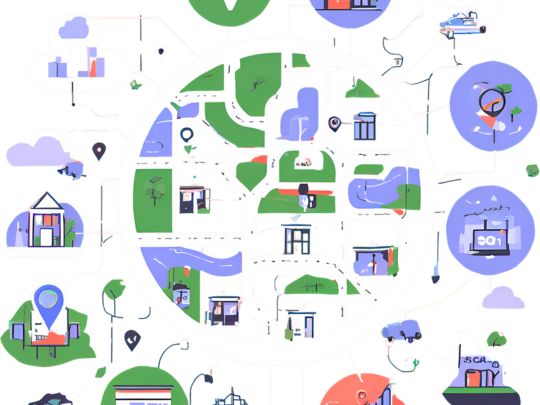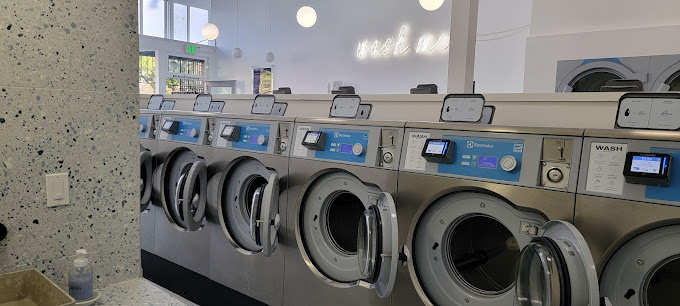In the digital age, business cards have evolved. Traditional paper cards are being replaced by digital business cards, offering a more sustainable, customizable, and tech-savvy solution for professionals and businesses. Whether you’re a freelancer, entrepreneur, or corporate professional, digital business cards are convenient and easy to share. But as with any service, digital business card providers come with both free and paid options. So, how do you decide which one to choose? Let’s explore the key differences between free and paid digital business card services to help you make an informed decision.
1. Customization and Design
Free Digital Business Cards: Free digital business card services often offer limited customization options. While they typically allow you to add your name, title, contact information, and social media links, the design templates are usually basic and restrictive. These platforms may limit your ability to adjust colors, fonts, layouts, and logos to match your personal or brand identity. As a result, you might end up with a generic-looking card that doesn’t reflect your style or professionalism.
Paid Digital Business Cards: Paid services, on the other hand, offer extensive customization options. You can fully personalize the card with advanced design features such as custom logos, unique fonts, personalized colors, and the ability to rearrange elements to suit your branding. This level of customization helps you create a digital business card that is distinctive and memorable, which can be essential for standing out in a competitive market.
2. Features and Functionality
Free Digital Business Cards: With free services, you often get the basics – the ability to share your contact information via email or a URL. However, these cards might lack advanced features such as direct integration with LinkedIn profiles, appointment scheduling tools, or the ability to track card interactions. You may also face restrictions on how many cards you can create or the formats in which they can be shared (e.g., QR codes, emails, or SMS).
Paid Digital Business Cards: Paid plans typically offer a range of advanced features that make them more practical for networking and business use. Many platforms allow you to include clickable links to your website, social media profiles, or even videos. Additionally, paid plans often provide features such as NFC (Near Field Communication) integration, allowing you to share your card by simply tapping another person’s device. Some services even offer analytics to track how many people view your card, which is crucial for gauging your networking efforts.
3. Branding Opportunities
Free Digital Business Cards: Free digital cards may include the service provider’s branding, such as a watermark or a link to their website. This could make your card appear less professional, as it doesn’t fully showcase your brand. In business settings, this can be a turn-off for potential clients or partners looking for a polished, professional image.
Paid Digital Business Cards: Paid services remove these brandings and allow you to showcase your own brand. Whether you’re running a personal brand or a business, having a digital card that represents your identity and services is essential. The freedom to fully integrate your logo, color scheme, and other brand elements ensures that your card reflects your professionalism and leaves a strong impression.
4. Storage and Syncing Across Devices
Free Digital Business Cards: Free services may limit the number of business cards you can store or may not offer cloud syncing across devices. If you need to access your card on multiple devices, you might have to manually update or send the information again.
Paid Digital Business Cards: Paid plans usually offer cloud storage, allowing you to access your digital business card on any device at any time. Whether you’re at your desktop, mobile, or tablet, your card can be readily available. Syncing across devices makes it easier for busy professionals to keep their contact information up-to-date without worrying about losing or misplacing their card.
5. Integration with Other Tools
Free Digital Business Cards: Integrations with other platforms, such as CRM systems or email marketing tools, are often absent in free versions of digital business card services. This can be a limitation for businesses that want to incorporate the digital card into their workflow for lead generation or customer relationship management.
Paid Digital Business Cards: Paid digital business card services tend to offer more integrations with other tools, which can be extremely useful for businesses. For example, you might be able to sync your card with your CRM, email campaigns, or even integrate it into your marketing platform. This saves time, automates workflows, and helps streamline processes, making it easier to manage your professional relationships.
6. Support and Customer Service
Free Digital Business Cards: Free digital business card platforms may have limited customer support options. You may only be able to access online FAQs or community forums, and responses to inquiries might not be timely. This can be frustrating if you encounter technical issues or have questions that need immediate attention.
Paid Digital Business Cards: Paid plans often come with dedicated customer support, including live chat, email support, or even phone assistance. This ensures that you can get help quickly if you run into any technical problems or need guidance on using advanced features. Having reliable support can save time and hassle, especially when managing professional connections.
7. Limitations on Sharing and Usage
Free Digital Business Cards: While free services are accessible, they often come with limitations on how many cards you can create, how often you can update them, or how widely you can share them. Some services may restrict the number of contacts you can share your card with or limit the ways in which your card can be distributed (e.g., via social media or email).
Paid Digital Business Cards: Paid plans remove most limitations, offering unlimited sharing and greater flexibility in how you distribute your digital business card. You can easily share it via QR codes, social media, email, or even integrate it into your email signature. This makes paid services ideal for professionals who need to send their cards to large networks or track interactions across various platforms.
8. Cost vs. Value
Free Digital Business Cards: The main attraction of free digital business card services is, of course, the zero cost. They’re a great option for individuals or small businesses just starting out or those with limited networking needs. However, the value you get from free services is usually lower than what you’d get from a paid plan.
Paid Digital Business Cards: While paid services come with a subscription fee, they offer more advanced features and customization that can help boost your professional presence and efficiency. The investment can be worthwhile for individuals or businesses looking for a more professional solution with added functionality and support.
Conclusion
When deciding between free and paid digital business card services, it ultimately comes down to your needs and goals. If you’re just starting out or need a simple solution, a free digital business card might be enough. However, if you want a professional, fully customizable, and feature-rich solution that aligns with your branding and business goals, then a paid service is the better option.
Remember, your digital business card is an extension of your brand and a tool to foster meaningful connections. Choosing the right service can make all the difference in how you present yourself to the world.

